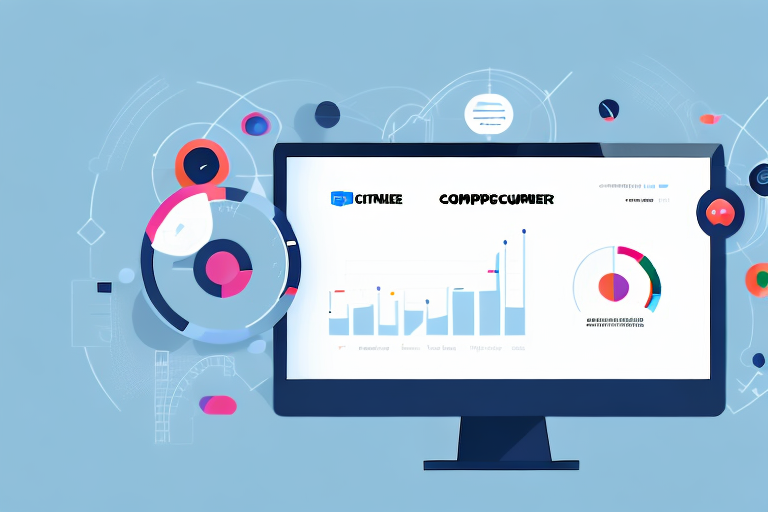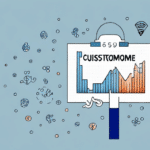Managing Customer Accounts: Tips for Success
The customer is often regarded as the cornerstone of any successful business. Effective customer account management not only fosters loyalty but also drives growth and profitability. This comprehensive guide delves into the essential components of a robust customer account management strategy, offering actionable tips to enhance your approach.
1. The Importance of Customer Account Management
Effective customer account management is pivotal for businesses of all sizes. Building strong relationships ensures customer loyalty, leading to repeat business and positive word-of-mouth referrals. Retaining existing customers is typically more cost-effective than acquiring new ones. According to a Harvard Business Review study, increasing customer retention rates by 5% can boost profits by 25% to 95%.
1.1 Enhancing Customer Loyalty
Strong relationships with customers lead to increased loyalty, which translates to sustained revenue streams and a solid reputation in the market.
1.2 Gaining Valuable Feedback
Regular communication with customers allows businesses to gather insights into their experiences, enabling continuous improvement of products and services.
1.3 Identifying Upselling and Cross-selling Opportunities
Understanding customer needs facilitates the identification of additional products or services that can enhance their experience and increase your revenue.
2. Understanding Customer Needs and Preferences
Comprehending your customers' goals and preferences is fundamental to effective account management. This understanding allows for personalized interactions and tailored offerings.
2.1 Conducting Customer Interviews
Engage in direct conversations with customers to gain deeper insights into their objectives and challenges.
2.2 Utilizing CRM Systems
Implementing Customer Relationship Management (CRM) software helps track customer interactions, purchase history, and preferences, enabling more personalized service.
3. Setting Up an Effective Account Management System
A robust account management system is the backbone of successful customer account management. It ensures organized data handling, secure information storage, and efficient processes.
3.1 Building a Comprehensive Database
Create a detailed repository of customer information, including contact details, purchase history, and interaction records.
3.2 Ensuring Data Security
Implement security measures such as encryption, password protection, and regular data backups to safeguard customer information.
3.3 Leveraging Data Analytics
Use analytics tools to monitor customer behavior, identify trends, and inform your marketing and sales strategies.
4. Key Metrics for Measuring Success
Tracking the right metrics is essential to assess the effectiveness of your customer account management strategies and make informed adjustments.
4.1 Customer Retention Rate
Measures the percentage of customers who continue to do business with you over a specific period.
4.2 Customer Satisfaction Scores
Evaluate customer satisfaction through surveys and feedback forms to identify areas for improvement.
4.3 Lifetime Value (CLV)
Calculates the total revenue a customer is expected to generate during their relationship with your business. According to Forbes, understanding CLV helps prioritize resources towards the most valuable customers.
4.4 Rate of Upselling and Cross-selling
Tracks how effectively additional products or services are being sold to existing customers.
5. Effective Communication Strategies
Communication is the linchpin of successful customer account management. It ensures that customers feel valued and heard.
5.1 Regular Updates and Follow-ups
Maintain consistent communication through emails, phone calls, or in-person meetings to keep customers informed and engaged.
5.2 Personalization
Tailor your communication by addressing customers by name, referencing past interactions, and offering personalized recommendations.
5.3 Responsive Support
Ensure prompt and helpful responses to customer inquiries and concerns to build trust and reliability.
6. Personalizing the Customer Experience
Personalization goes beyond addressing customers by name; it involves creating unique experiences based on their individual preferences and behaviors.
6.1 Customized Offers and Promotions
Provide tailored discounts or promotions based on customers' purchase history and preferences.
6.2 Personalized Recommendations
Use data insights to suggest products or services that align with the customer's interests and needs.
6.3 Exceptional Customer Service
Deliver outstanding service by resolving issues efficiently and exceeding customer expectations.
7. Continuous Improvement through Feedback
Implementing feedback loops is crucial for ongoing enhancement of your customer account management strategies.
7.1 Collecting Diverse Feedback
Gather feedback from a wide range of customers across different demographics and regions to gain comprehensive insights.
7.2 Analyzing and Acting on Feedback
Use the collected feedback to make informed decisions and improve your products, services, and customer interactions.
7.3 Communicating Improvements
Inform customers about the changes made based on their feedback to demonstrate that their opinions are valued.
8. Leveraging Technology for Efficiency
Modern technology can streamline your customer account management processes, making them more efficient and effective.
8.1 Automation of Routine Tasks
Automate repetitive tasks such as follow-up emails and data entry to save time and reduce errors.
8.2 Advanced CRM Features
Utilize CRM features like segmentation, analytics, and integration with other tools to enhance your account management efforts.
8.3 Enhancing Customer Interactions
Implement tools like chatbots and personalized email marketing to improve the quality and speed of customer interactions.
9. Measuring ROI of Account Management Efforts
Assessing the return on investment (ROI) of your customer account management initiatives ensures that your strategies are effective and financially viable.
9.1 Calculating ROI
Compare the revenue generated from account management activities against the costs involved to determine ROI.
9.2 Adjusting Strategies Based on ROI
Use ROI insights to refine your strategies, focusing on high-impact activities that yield the best financial returns.
9.3 Long-term Financial Planning
Incorporate ROI data into your long-term financial planning to allocate resources efficiently and support sustainable growth.
Conclusion
Effective customer account management is integral to the success and longevity of any business. By prioritizing communication, personalization, and continuous improvement, you can cultivate strong relationships with your customers, enhancing their loyalty and increasing your revenue. Implement the strategies outlined in this guide to develop a comprehensive customer account management approach that drives tangible results.




















